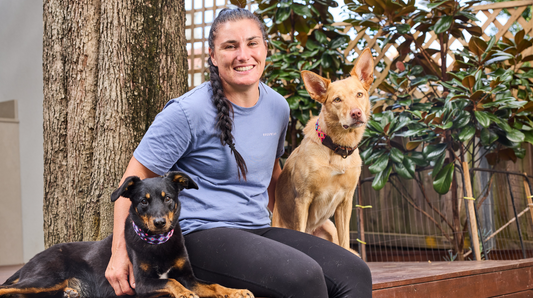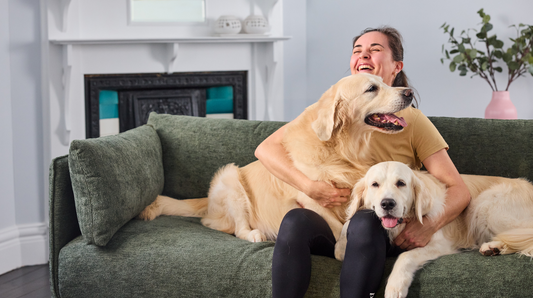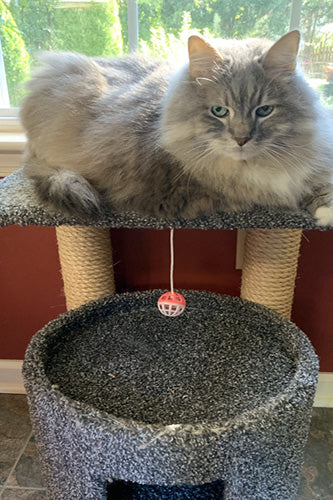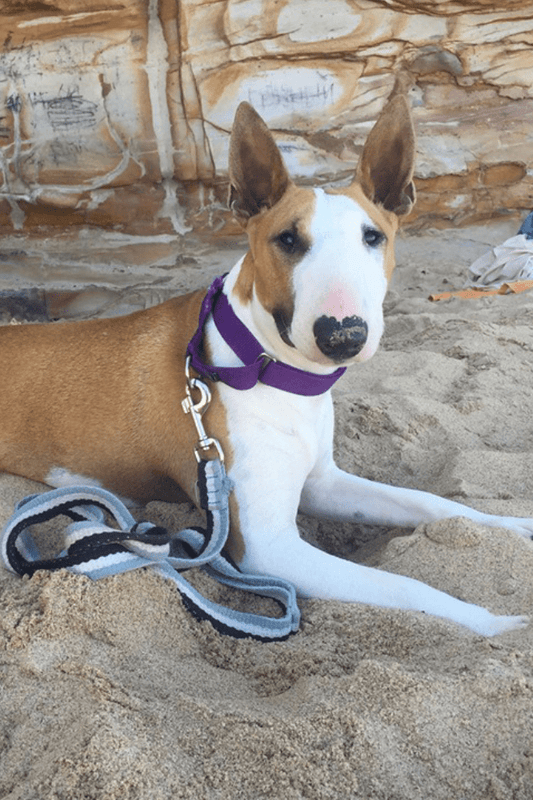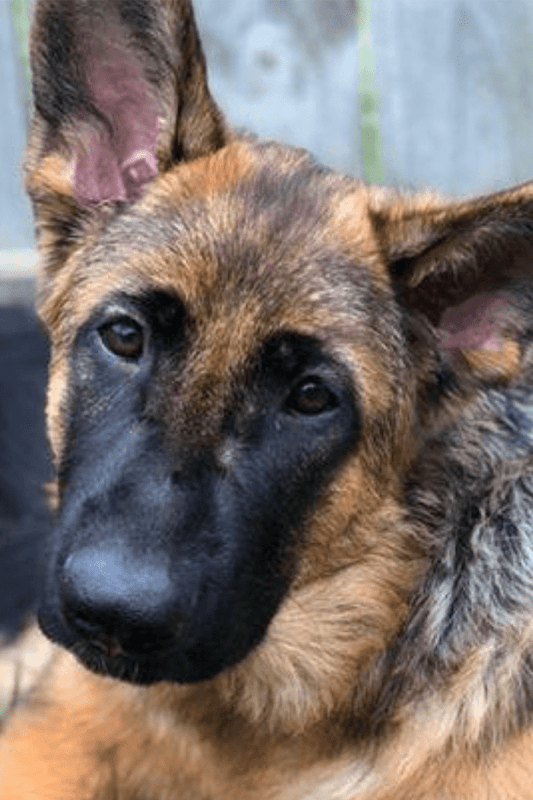SEEING, HEARING, SENSING, SUPPORTING.
Assistance Dogs
Assistance Dogs are simply special and there is so much more to them just wearing a service vest and being allowed to be with their human wherever they go. This is the story of Kate & her crew.
Tell us about yourself. How long have you been training dogs?
My name is Kate and I am in my late 20’s living in regional NSW. I have both mental and physical disabilities that affect my daily life, which are mitigated through the use of an Assistance Dog (AD).
I actually used to volunteer for a small AD organisation (I started with them back in 2016). Their trainers taught me, and I worked with their program dogs. Whilst volunteering with them, I studied at the National Dog Trainers Federation (NDTF) to get an official dog training qualification and I continued to volunteer as a trainer, as well as beginning to do the Public Access Test (PAT) assessments for the organisation. Unfortunately, as my mental and physical health declined I had to stop volunteering with the organisation. I did not have my own AD while I worked with the organisation.

What are your dogs’ names and tell us a bit about each dog; their personality, their quirks, their challenges:
Kodak (after the camera brand) is my heart dog. Honestly have been through some of my darkest times and biggest challenges with this dog beside me. She is sweet, sassy, stubborn, soft and cheeky. Kodak has so many quirks too! She is super talkative but not barky, she just likes to awoo and make all sorts of noises at you. She also has the nickname Butt Butt because when you are sitting and patting her or when she is happy or post bath she will put her head down and flip her but up in the air and slide down on her back. We call this Butt Butting. She will always let her opinion be known, Kodak often stomps her front to feet and awwoos at people when she doesn’t get what she wants. My best friend and her have had many stamp offs with lots being said on both sides…mostly because she wouldn’t throw the ball for Kodak.
Quiver (after the place you hold your arrows in archery) is my little scaredy cat. She has a super nose though, so we are seeing if she has what it takes to be a koala scat detection dog – if not she will always be happy to just search for fun. Quiver was 1.5 years old when she came into my life and now 5 years on she is a totally different dog to the one that walked into my life then. She doesn’t really know how to play with humans, but she has started trying to with a small select group of people. Quiv is soft, sweet, quiet and cuddly but always the first, and mostly the only one to bark at a knock on the door. She is a super easy dog to have at home, just wanting to nap all day. Out and about though, she is more of a challenge just because she is easily scared. She is so well behaved and willing to please however!
Lumos aka Lumi (the spell of Illumination from Harry Potter), she is the dog I have waited so so so many years for. I fell love with dogs from her breeder over 10 years ago and finally a year ago the stars aligned, and I was able to get my dream dog. Lumi is super smart, spunky, willing to please, cuddly and driven. Her biggest challenge is distractions from the general public. She is great at ignoring them when they ignore her, but she is still learning to ignore those that interact with her. She is still young though and will get there. Her “work mode” mentality is awesome, as soon as that harness or vest goes on she is all business. As soon as it comes off it’s crazy mode. Having just turned one, she is doing really well for her age!

Why Koolies and Border Collies?
I have always loved Border Collies, since I was a kid. When I was looking for my first dog I knew I wanted a herding breed, and after some research I was stuck between a Koolie and a Border Collie – then I happened to stumble on a mix of both bred out on a working property from working parents. From there my love for both breeds grew. The more I worked with herders the more I liked them. So, when I decided to add a second dog to my home, I went for a Koolie and then the third I was ready for my dream dog – a Border Collie from my dream breeder. I just like their attitude, their spunk, the way they train, the fact they just need time to work things out themselves rather than just blindly following. I enjoy those training challenges. I enjoy the sparky, spunky, attitude filled personalities (also why I have 3 female dogs). I am drawn to the stubborn, cheeky types rather than the more biddable, straightforward types.
How long have you had an assistance dog for?
About 5 years now
Was Kodak your first AD?
Yes, she was. She wasn’t planned to be my AD either, she was my pet for the first 2 and a bit years and then after multiple suggestions from my doctor and psychologist we took the step forward to see if Kodak would be suitable to be an AD. She had already been helping me at home in so many ways and already alerted to changes in my conditions for me so really it was just the public access side which she took to so easily.
How does an AD benefit you?
They give me my independence back. Kodak can give me up to 15 minutes heads up before an episode (in which I may or may not pass out, but my brain definitely shuts down to the point I am unaware of what is going on around me) meaning I have time to be somewhere safe. Lumi is still to learn to pick up on that alert, but she will get there. However, Lumi is catching rapid heart rate rises which can lead to dizziness, shaking or fainting 20-30 seconds before they happen which is a great start, Kodak gives me about 45 seconds warning so Lumi is definitely catching up. Lumos is super at response and interruption work though. She picks up changes in my behaviour very quickly and is very determined to do her job. They mean I can go out on my own again. I went through a time where for years I would only go to work, doctors, psychologist and home. Since having an AD I have been able to access more of the world again and safely, with confidence. They have become the light in my darkest moments and my hope that one day my life will be easier.

How much training goes into having an AD?
So so so much and it never stops. You are always refining skills or teaching new ones, or a condition can change therefore need skills need to be taught. Most dogs take 18-24 months to go from Assistance dog in training to Assistance Dog, but even then, the training never stops. I feel like all I ever do with my AD is train, practice and refine skills.
How much does it cost to have an AD?
Much more than you would think. For the first year of Lumi’s life she has cost me over $15,000 already. There’s lot of costs involved with professional training, care, gear, organisation fees if you go that direction, extra doctors and vet visits to get paperwork, paperwork from trainers, PAT assessments, the list goes on, they are definitely not cheap!
Do AD live like normal dogs?
Yes, but a little bit more spoilt I think. They definitely spend a lot more time training and refining skills than most pet dogs. Other than that though they get to be dogs! My crew often come up into the bush with me and hoon around, go swimming, get muddy, chase each other.
Are they ever not working?
Yes! They get plenty of down time! In saying that though because of my disabilities my dogs are always aware of me when they are with me, and they are ready to alert or respond to any changes in my conditions.

What are some challenges that come with training and raising an AD?
Not all dogs are cut out for this work, in fact very few are. The chances of your dog not being suitable and having to start again with a new dog are higher than you think. Also, there will always be set backs, things go wrong and you can’t control the world around you or the public. I always recommend working with a trainer from the very start, before you even get the dog because they can help you pick a suitable breed and puppy with a higher chance of making it to AD.
What are some things you wish the public knew about having an AD?
We don’t want to have to rely on a dog to be independent, but we have to. We don’t want to take our dog everywhere, but we have to. These dogs are our life lines so it is so important that they aren’t distracted in any way, including but not limited to; talking to the dog, kissing at them, whistling at them, touching them, feeding them – anything like that can undo training and hard work or distract them from the important job they are doing and put people’s lives at risk. Having an AD is not a simple or easy thing.
What do you feed your crew?
Big Dog BARF patties and Ziwipeak, with add ons of course, like fresh bones, fresh eggs and other random fresh food add ons.

How long have you been using Antinol for?
Since August 2019 for Kodak and Quiver, for Lumi it’s been since I brought her home at 8 weeks old back in December 2020
Have you noticed any changes since using Antinol?
I am using it for prevention and joint maintenance in all of my dogs, alongside hydrotherapy and raw feeding, so there weren’t really any changes to notice. It has done a great job supporting Lumi’s growing joints and keeping Kodak’s joint healthy and mobile as we move into her senior years.
What are your goals for the future?
To get Lumos all trained up, Public Access Test (PAT) assessed and ready for a big trip when the world opens up. I would love to take her on my next cruise with me but there is a lot of work we need to do to get there (and a lot of paperwork!)




